Inhibition of innate immune response ameliorates Zika virus-induced neurogenesis deficit in human neural stem cells
- PMID: 33657175
- PMCID: PMC7959377
- DOI: 10.1371/journal.pntd.0009183
Inhibition of innate immune response ameliorates Zika virus-induced neurogenesis deficit in human neural stem cells
Abstract
Global Zika virus (ZIKV) outbreaks and their strong link to microcephaly have raised major public health concerns. ZIKV has been reported to affect the innate immune responses in neural stem/progenitor cells (NS/PCs). However, it is unclear how these immune factors affect neurogenesis. In this study, we used Asian-American lineage ZIKV strain PRVABC59 to infect primary human NS/PCs originally derived from fetal brains. We found that ZIKV overactivated key molecules in the innate immune pathways to impair neurogenesis in a cell stage-dependent manner. Inhibiting the overactivated innate immune responses ameliorated ZIKV-induced neurogenesis reduction. This study thus suggests that orchestrating the host innate immune responses in NS/PCs after ZIKV infection could be promising therapeutic approach to attenuate ZIKV-associated neuropathology.
Conflict of interest statement
The authors have declared that no competing interests exist.
Figures
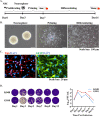
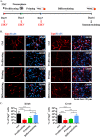

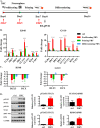
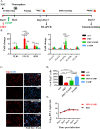
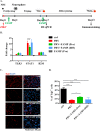

Similar articles
-
Differential Responses of Human Fetal Brain Neural Stem Cells to Zika Virus Infection.Stem Cell Reports. 2017 Mar 14;8(3):715-727. doi: 10.1016/j.stemcr.2017.01.008. Epub 2017 Feb 16. Stem Cell Reports. 2017. PMID: 28216147 Free PMC article.
-
The human neural cell atlas of Zika virus infection in developing brain tissue.Cell Rep Med. 2025 Jun 17;6(6):102189. doi: 10.1016/j.xcrm.2025.102189. Cell Rep Med. 2025. PMID: 40532660 Free PMC article.
-
Zika Virus Disrupts Neural Progenitor Development and Leads to Microcephaly in Mice.Cell Stem Cell. 2016 Jul 7;19(1):120-6. doi: 10.1016/j.stem.2016.04.017. Epub 2016 May 11. Cell Stem Cell. 2016. PMID: 27179424
-
Immune Evasion Strategies Used by Zika Virus to Infect the Fetal Eye and Brain.Viral Immunol. 2020 Jan/Feb;33(1):22-37. doi: 10.1089/vim.2019.0082. Epub 2019 Nov 5. Viral Immunol. 2020. PMID: 31687902 Free PMC article. Review.
-
The impact of Zika virus in the brain.Biochem Biophys Res Commun. 2017 Oct 28;492(4):603-607. doi: 10.1016/j.bbrc.2017.01.074. Epub 2017 Jan 17. Biochem Biophys Res Commun. 2017. PMID: 28108286 Review.
Cited by
-
Vav Proteins in Development of the Brain: A Potential Relationship to the Pathogenesis of Congenital Zika Syndrome?Viruses. 2022 Feb 14;14(2):386. doi: 10.3390/v14020386. Viruses. 2022. PMID: 35215978 Free PMC article. Review.
-
Role of microglia in brain development after viral infection.Front Cell Dev Biol. 2024 Jan 16;12:1340308. doi: 10.3389/fcell.2024.1340308. eCollection 2024. Front Cell Dev Biol. 2024. PMID: 38298216 Free PMC article. Review.
-
Zika Virus: A New Therapeutic Candidate for Glioblastoma Treatment.Int J Mol Sci. 2021 Oct 12;22(20):10996. doi: 10.3390/ijms222010996. Int J Mol Sci. 2021. PMID: 34681654 Free PMC article. Review.
-
Pathogenesis of Zika Virus Infection.Annu Rev Pathol. 2023 Jan 24;18:181-203. doi: 10.1146/annurev-pathmechdis-031521-034739. Epub 2022 Sep 23. Annu Rev Pathol. 2023. PMID: 36151059 Free PMC article. Review.
-
Intrauterine Zika Virus Infection: An Overview of the Current Findings.J Pers Med. 2025 Mar 1;15(3):98. doi: 10.3390/jpm15030098. J Pers Med. 2025. PMID: 40137414 Free PMC article. Review.
References
-
- Reynolds MR, Jones AM, Petersen EE, Lee EH, Rice ME, Bingham A, et al.. Vital Signs: Update on Zika Virus-Associated Birth Defects and Evaluation of All U.S. Infants with Congenital Zika Virus Exposure—U.S. Zika Pregnancy Registry, 2016. MMWR Morb Mortal Wkly Rep. 2017;66(13):366–73. 10.15585/mmwr.mm6613e1 - DOI - PMC - PubMed
-
- Kleber de Oliveira W, Cortez-Escalante J, De Oliveira WT, do Carmo GM, Henriques CM, Coelho GE, et al.. Increase in Reported Prevalence of Microcephaly in Infants Born to Women Living in Areas with Confirmed Zika Virus Transmission During the First Trimester of Pregnancy—Brazil, 2015. MMWR Morb Mortal Wkly Rep. 2016;65(9):242–7. 10.15585/mmwr.mm6509e2 - DOI - PubMed
Publication types
MeSH terms
Grants and funding
LinkOut - more resources
Full Text Sources
Other Literature Sources
Medical
Miscellaneous

